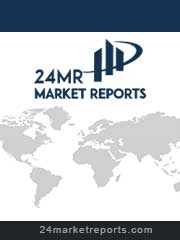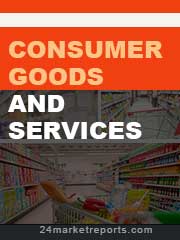
Download FREE Report Sample
Download Free sampleMARKET INSIGHTS
The global eco-friendly plastic bags market was valued at USD 1.85 billion in 2024 and is projected to grow from USD 1.98 billion in 2025 to USD 2.96 billion by 2032, exhibiting a CAGR of 7.1% during the forecast period.
Eco-friendly plastic bags are sustainable alternatives to conventional plastic bags, designed to decompose naturally without harming the environment. These biodegradable bags are typically made from materials such as polylactic acid (PLA), polyhydroxyalkanoate (PHA), and starch blends, which break down under exposure to light and oxygen within three years or less. Unlike traditional plastics, they leave no microplastic residue, making them a preferred choice for environmentally conscious consumers and businesses.
Market growth is primarily driven by stringent government regulations on single-use plastics, rising consumer awareness about sustainability, and corporate commitments to reduce plastic waste. Europe dominates the market with a 55% share, supported by strong regulatory frameworks, while North America and China collectively hold around 30% of the market. The starch blends segment leads the product category, accounting for over 45% of global demand, followed by applications in food packaging and convenient shopping.
Stringent Plastic Ban Policies Accelerate Adoption of Eco-friendly Alternatives
Government regulations worldwide are driving exponential growth in the eco-friendly plastic bags market through strict bans on conventional plastic products. Over 100 countries have implemented full or partial bans on single-use plastics, with regions like Europe enforcing the Single-Use Plastics Directive that requires significant reduction in plastic carrier bags. This regulatory pressure creates immediate demand for compliant alternatives, with the global biodegradable packaging market projected to grow at 17% annually through 2030. Manufacturers are scaling production of certified compostable solutions to meet these legal requirements while maintaining functionality for end-users.
Consumer Sustainability Awareness Fuels Market Expansion
To know more about market statistics, Download a FREE Sample copy
Heightened environmental consciousness among consumers has become a powerful market driver, with 74% of global consumers willing to pay premium prices for sustainable packaging. Retailers are responding to this demand by switching to certified compostable bags across multiple applications - from grocery carry-outs to e-commerce packaging. The food service segment shows particularly strong adoption, as quick-service restaurants increasingly use plant-based PLA bags to align with their corporate sustainability commitments. This behavioral shift creates a $420 million annual opportunity for eco-friendly bag manufacturers serving the hospitality sector alone.
Technological Advancements Improve Product Viability
Material science breakthroughs are overcoming traditional limitations of biodegradable bags, with new starch-PLA composites now offering comparable tensile strength to conventional LDPE at just 15-20% cost premium. Recent innovations in PHA (polyhydroxyalkanoate) production using agricultural waste have lowered prices by 40% since 2022, making marine-degradable bags commercially viable. Major brands have launched high-performance alternatives, including freezer-safe variants with 12-month shelf stability, addressing previous barriers to adoption in perishable goods packaging. These technological improvements are critical for market penetration in price-sensitive segments.
High Production Costs Limit Price Competitiveness
Despite technological improvements, biodegradable bags still carry 50-70% cost premium over conventional plastics, creating adoption resistance in cost-sensitive markets. The specialized fermentation processes required for PHA and PLA production require capital-intensive infrastructure, with average production facilities requiring $200-300 million investments. This cost disparity remains problematic in developing regions where environmental regulations are less stringent and consumers prioritize affordability over sustainability. Until economies of scale are achieved, price sensitivity will continue restraining market growth across certain geographic and industry segments.
Inconsistent Certification Standards Create Confusion
The lack of harmonized global standards for biodegradability claims presents a significant market restraint. While Europe's EN13432 and America's ASTM D6400 provide clear certification frameworks, many emerging markets lack robust verification systems resulting in misleading "greenwashing" products. Approximately 30% of bags marketed as biodegradable fail to meet industrial composting requirements, undermining consumer trust. This regulatory fragmentation increases compliance complexity for multinational manufacturers and slows category growth in regions without mature certification ecosystems.
Logistical Challenges in Waste Management Infrastructure
Ineffective organic waste collection systems are creating implementation barriers despite product advancements. Unlike traditional recycling streams, compostable bags require specialized industrial facilities with controlled conditions to degrade properly. Currently, only 15% of European municipalities and 5% of North American cities offer dedicated composting that can process these materials effectively. This infrastructure gap forces many biodegradable bags into landfills where they decompose no faster than conventional plastics, negating their environmental benefits and reducing their value proposition to sustainability-focused buyers.
Emerging Bio-based Material Innovations Open New Applications
Next-generation materials derived from seaweed, mushroom mycelium, and agricultural byproducts present lucrative opportunities for differentiation. These third-wave biopolymers offer enhanced performance characteristics like water resistance and flexibility while maintaining full compostability. A South Korean manufacturer recently developed a cassava-based bag with 90-day marine degradation, creating potential in coastal communities and maritime industries. Such innovations enable premium product positioning and access to previously untapped market segments where conventional bioplastics couldn't meet technical requirements.
Asia-Pacific Region Presents Untapped Growth Potential
While Europe currently dominates market share, the Asia-Pacific region offers exponential growth potential with projected 22% CAGR through 2032. Governments in India, Vietnam, and Indonesia are implementing plastic phase-out policies while local manufacturers rapidly expand biodegradable resin production capacity. China's recent ban on non-degradable shopping bags in major cities creates immediate demand for 800,000+ ton annual capacity. Local players are developing cost-competitive starch blends specifically tailored for Asian climatic conditions and consumption patterns, presenting opportunities for regional customization.
Circular Economy Partnerships Drive Value Chain Integration
Strategic collaborations across the value chain are creating closed-loop systems that enhance market viability. Leading retailers are partnering with biopolymer producers and waste management firms to establish take-back programs where used bags are collected and industrially composted to create fertilizer for organic farms. A European supermarket chain's pilot program demonstrated 68% customer participation rates when offering discounts for returned compostable packaging. Such integrated models improve environmental credentials while creating additional revenue streams throughout the product lifecycle.
Consumer Education Gaps Hinder Adoption
Widespread misconceptions about proper disposal methods create implementation challenges, as many consumers mistakenly believe biodegradable bags can decompose in home compost or conventional recycling streams. Studies show 62% of users dispose of certified compostable bags incorrectly, contaminating recycling streams or sending them to landfills. This education gap necessitates substantial investment in public awareness campaigns and clear labeling standards to ensure proper end-of-life handling that delivers promised environmental benefits.
Material Shelf Life Limitations Impact Commercial Viability
Unlike conventional plastics with near-indefinite shelf stability, many biodegradable materials face decomposition onset within 6-12 months when exposed to humidity and heat. This characteristic creates inventory management challenges for retailers and distributors in tropical climates where accelerated degradation can occur. Manufacturers are investing in advanced polymer stabilizers and moisture-barrier coatings to extend functional lifespan, but this adds 15-25% to production costs. Balancing biodegradation performance with commercial practicality remains an ongoing technical challenge.
Raw Material Supply Chain Vulnerabilities
The industry faces agricultural commodity risks as most biodegradable resins rely on food crop feedstocks like corn starch. Fluctuations in grain prices directly impact production costs, with the 2022 global wheat shortage causing 30% price spikes in related biopolymers. Alternative feedstocks from non-food biomass show promise but currently lack scale. Strategic partnerships with agricultural cooperatives and vertical integration into feedstock production are emerging as potential solutions to stabilize supply chains against market volatility.
Starch Blends Segment Dominates the Market Due to Cost-Effectiveness and Wide Availability
The market is segmented based on type into:
Polylactic acid (PLA)
Polyhydroxyalkanoate (PHA)
Starch Blends
Others
Convenient Shopping Segment Leads Due to Rising Demand for Sustainable Carrier Bags
The market is segmented based on application into:
Food Packaging
Industrial Packaging
Convenient for Shopping
Garbage Containing
Others
Plant-based Materials Gain Traction Due to Renewable Nature and Lower Carbon Footprint
The market is segmented based on material source into:
Plant-based (Corn, Sugarcane, Potato Starch)
Fossil-based Additives
Microbial-based
Leading Brands Accelerate Sustainability Efforts to Capture Market Share
The global eco-friendly plastic bags market features a dynamic competitive environment with a mix of established manufacturers and emerging innovators. BioBag International AS currently leads the segment, holding approximately 15% market share in 2024 through its comprehensive range of certified compostable bags and strong European distribution network. The company's success stems from its early mover advantage in developing starch-based solutions that meet stringent EU packaging directives.
Walki Plastiroll Oy and RKW Group follow closely, particularly dominating the industrial packaging segment through their patented multilayer film technologies. These companies have significantly expanded production capacity following the 2023 EU Directive on Single-Use Plastics, which mandated biodegradable alternatives for specific applications. Their ability to combine functionality with environmental compliance gives them competitive edge in commercial markets.
Meanwhile, Asian manufacturers like Jiangsu Torise biomaterials and JUNER Plastic packaging are rapidly gaining traction through cost-competitive PLA-based solutions. While currently commanding smaller market shares individually, collectively they account for nearly 25% of Asia-Pacific production. These companies benefit from regional government subsidies for biodegradable materials research and proximity to starch feedstock sources.
Strategic developments in 2024 include EnviGreen's partnership with Indian retail chains to introduce water-soluble grocery bags and Symphony Polymers' acquisition of a German bioplastics startup. Such moves indicate intensifying competition as brands seek technological differentiation beyond basic biodegradability claims.
BioBag International AS (Norway)
Walki Plastiroll Oy (Finland)
RKW Group (Germany)
Jiangsu Torise biomaterials (China)
JUNER Plastic packaging (China)
Chnpack (China)
Symphony Polymers (India)
EnviGreen (India)
XCBIO (China)
Polybags Ltd. (UK)
BioPak (Australia)
Scanlux Packaging (Sweden)
The global push for sustainable packaging solutions has accelerated due to stringent government regulations banning conventional single-use plastics. Over 60 countries have implemented full or partial restrictions on non-biodegradable plastic bags since 2020, creating unprecedented demand for eco-friendly alternatives. The European Union's Single-Use Plastics Directive, which came into full effect in 2021, has been particularly influential, driving the region's 55% market share of the global eco-friendly bags sector. Manufacturers are responding by expanding production capacities of compostable polymers while developing cost-effective formulations to meet regulatory compliance across different geographies.
Advancements in Biopolymer Technology
Material innovation represents the most significant technological trend, with starch-based blends currently dominating over 45% of the product mix. Recent developments in polylactic acid (PLA) formulations have improved tensile strength by 30-40% compared to first-generation biodegradable bags, making them viable for heavy-duty applications like industrial packaging. The emergence of marine-degradable PHA (polyhydroxyalkanoate) polymers is particularly promising, with decomposition timelines reduced to under 12 months in aquatic environments without leaving microplastic residues.
The retail sector accounts for over 60% of eco-friendly bag applications globally, driven by both regulatory pressures and shifting consumer preferences. Major supermarket chains across Europe and North America have completely transitioned to compostable shopping bags, with average price premiums decreasing by 15-20% since 2022 due to economies of scale. The food packaging segment follows closely, where moisture-resistant biodegradable films are replacing conventional plastics for fresh produce packaging. This sectoral shift reflects broader ESG commitments from retail corporations, with 78% of Fortune 500 companies having formal plastic reduction targets that specifically mandate biodegradable alternatives.
North America
The North American market for eco-friendly plastic bags is driven by stringent environmental policies and a growing consumer shift toward sustainable packaging. The U.S. and Canada have implemented bans on single-use plastics in multiple states and provinces, accelerating adoption of biodegradable alternatives. Retailers and food service providers are increasingly switching to starch-based and PLA bags to comply with regulations and meet eco-conscious consumer demand. However, higher production costs compared to conventional plastics remain a barrier, particularly for small businesses. The region accounts for nearly 30% of global market share, with innovation in compostable materials gaining traction.
Europe
Europe dominates the global eco-friendly plastic bags market, holding 55% of worldwide demand, led by Germany, France, and the U.K. The EU’s Single-Use Plastics Directive and extended producer responsibility (EPR) schemes have forced rapid adoption of biodegradable solutions. Starch blends are the most widely used material due to their cost-effectiveness and compliance with EN 13432 composting standards. However, inconsistent waste management infrastructure across member states creates challenges in achieving true circularity. Industry collaboration—such as the European Bioplastics Association’s initiatives—is critical for scaling production and improving end-of-life processing.
Asia-Pacific
The APAC region is the fastest-growing market, propelled by urbanization and government bans on plastic bags in countries like China, India, and Thailand. While price sensitivity keeps conventional plastics dominant, rising environmental awareness and stricter regulations are driving demand. China, the region’s largest producer and consumer, is investing in PHA-based biodegradable bags to reduce reliance on imports. India’s ban on single-use plastics has spurred local manufacturing, though infrastructure gaps in waste collection limit effectiveness. Southeast Asia’s tourism-driven economies are also adopting eco-friendly bags to curb marine pollution.
South America
South America shows moderate growth, with Brazil and Argentina leading through patchwork regulations and corporate sustainability pledges. Supermarkets and retail chains are primary adopters, but economic instability and lack of standardized policies hinder large-scale transitions. Starch-based bags dominate due to lower costs, while PLA variants are niche products for premium markets. The region’s weak recycling ecosystems and limited consumer awareness pose challenges, though NGO-led campaigns and cross-border collaborations are slowly improving adoption rates.
Middle East & Africa
The MEA market is nascent but holds potential, with the UAE and South Africa at the forefront. Dubai’s 2022 single-use plastic ban and Saudi Arabia’s Vision 2030 sustainability goals are creating localized demand. However, low regulatory enforcement in most African nations and reliance on plastic imports constrain growth. Oil-producing countries face unique challenges in balancing plastic industries with eco-initiatives. Pilot projects for oxo-biodegradable bags are emerging, though debates about their true environmental impact persist. Strategic partnerships with European and Asian suppliers could accelerate market development.
This market research report offers a holistic overview of global and regional markets for the forecast period 2025–2032. It presents accurate and actionable insights based on a blend of primary and secondary research.
✅ Market Overview
Global and regional market size (historical & forecast)
Growth trends and value/volume projections
✅ Segmentation Analysis
By product type or category
By application or usage area
By end-user industry
By distribution channel (if applicable)
✅ Regional Insights
North America, Europe, Asia-Pacific, Latin America, Middle East & Africa
Country-level data for key markets
✅ Competitive Landscape
Company profiles and market share analysis
Key strategies: M&A, partnerships, expansions
Product portfolio and pricing strategies
✅ Technology & Innovation
Emerging technologies and R&D trends
Automation, digitalization, sustainability initiatives
Impact of AI, IoT, or other disruptors (where applicable)
✅ Market Dynamics
Key drivers supporting market growth
Restraints and potential risk factors
Supply chain trends and challenges
✅ Opportunities & Recommendations
High-growth segments
Investment hotspots
Strategic suggestions for stakeholders
✅ Stakeholder Insights
Target audience includes manufacturers, suppliers, distributors, investors, regulators, and policymakers
-> Key players include BioBag, Walki Plastiroll Oy, RKW Group, Jiangsu Torise biomaterials, and JUNER Plastic packaging, among others. Global top 5 manufacturers hold a share over 10%.
-> Key growth drivers include increasing environmental regulations, rising consumer awareness about sustainability, and government bans on conventional plastic bags.
-> Europe is the largest market with about 55% share, followed by North America and China with approximately 30% combined share.
-> Emerging trends include development of advanced biodegradable materials, plant-based plastic alternatives, and smart packaging solutions.

Speak to our Custom Research Team and get the Custom Research in a budget
Custom ResearchFrequently Asked Questions ?
A license granted to one user. Rules or conditions might be applied for e.g. the use of electric files (PDFs) or printings, depending on product.
A license granted to multiple users.
A license granted to a single business site/establishment.
A license granted to all employees within organisation access to the product.
Upto Working 24 to 48 hrs
Upto 72 hrs max - Weekends and Public Holidays
Online Payments with PayPal and CCavenue
Wire Transfer/Bank Transfer
Hard Copy




 Industry Market Size
Industry Market Size SWOT Analysis
SWOT Analysis Industry Major Players
Industry Major Players Revenue Forecasts
Revenue Forecasts Historical and Forecast Growth
Historical and Forecast Growth Profitability Analysis
Profitability Analysis
























